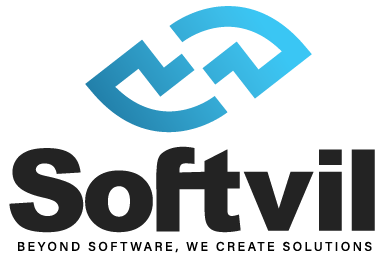The need for dynamic and responsive web development has never been more critical. As web users increasingly demand interactive and personalized online experiences, web development companies in Sri Lanka, like those worldwide, are continuously striving to meet these evolving expectations. It is within this dynamic context that the role of Java emerges as a pivotal force in creating web applications that not only adapt to user input but also seamlessly deliver real-time data.
In this comprehensive article, we delve into the world of web development, with a specific focus on how Java empowers developers to craft dynamic and responsive web applications. We will explore the fundamental concepts of dynamic web applications, the myriad benefits they offer over static websites, and the pivotal role Java plays in their development. Moreover, we’ll provide valuable insights into the steps and best practices for creating Java-based dynamic web applications, ensuring your online presence remains engaging, adaptive, and user-centric.
Understanding Dynamic Web Applications

In the realm of web development, the distinction between static websites and dynamic web applications is fundamental. Static websites, typically created by web design companies, present fixed content to all visitors, regardless of their interactions. These websites consist of HTML and CSS files that do not change unless manually updated by the site administrators. While static sites serve informational purposes effectively, they lack the versatility required for modern online experiences.
On the other hand, dynamic web applications represent a significant evolution in web development. Unlike their static counterparts, dynamic web applications generate content on-the-fly, responding to user input, database queries, or real-time data feeds. This dynamic nature introduces a host of benefits:
- Interactivity: Dynamic web applications empower users to actively engage with the content. Visitors can submit forms, participate in discussions, perform searches, and access personalized features. This heightened interactivity fosters user engagement and creates a more immersive online experience.
- Personalization: These applications leverage user data to tailor content, providing exclusive recommendations, customized dashboards, and targeted ads. Personalization enhances user satisfaction, improves retention rates, and positively influences conversion rates.
- Real-Time Updates: Dynamic web applications excel in delivering real-time information, crucial for platforms like news websites, social media networks, and collaborative tools. Users receive the latest data and updates without the need to manually refresh the page, streamlining and enhancing the user experience.
- Flexibility: The dynamic nature of these applications allows for agile content management and customization. Website administrators can efficiently update and modify content, adapt to changing market conditions, update product information swiftly, and launch targeted campaigns.
- Scalability: Dynamic web applications are engineered to handle high traffic and growing user numbers. Their scalable architectures and efficient database management ensure responsiveness even during periods of heavy usage.
Why Choose Java for Web Development

When it comes to web development, web development companies across the globe recognize Java as a powerhouse due to its unique combination of versatility, scalability, performance, and security. Here’s a deeper exploration of why Java stands as a preferred choice for Java web development:
Versatility and Cross-Platform Compatibility
Java’s hallmark “write once, run anywhere” principle allows developers to build web applications that can seamlessly run on diverse platforms without modification. The Java Virtual Machine (JVM) ensures cross-platform portability, making Java an ideal language for reaching a broad user base.
Scalability and Performance
Java’s architecture supports scalability through features like multithreading and robust memory management. This means that Java web applications can efficiently handle growing user loads and data volumes. Additionally, Java’s Just-In-Time (JIT) compilation optimizes performance, providing users with a fast and responsive web experience.
Maturity and Stability
With a history spanning over two decades, Java has matured into a stable and reliable language. Its extensive developer community, comprehensive documentation, and well-established best practices ensure that web development companies have access to the resources and support needed for successful Java web development projects.
Rich Libraries and Frameworks
Java boasts a vast ecosystem of libraries and frameworks specifically designed for web development. Popular frameworks like Spring provide developers with powerful tools for building robust and scalable web applications. Libraries such as Hibernate simplify database interactions and object-relational mapping, streamlining the development process.
Security Focus
Security is paramount in web development, and Java addresses this concern effectively. It offers built-in security features and promotes secure coding practices. The Java Security Manager allows developers to define precise rules governing access to various parts of a Java program, guarding the application against unauthorized access and potential vulnerabilities.
Creating Java Web Applications: A Step-by-Step Guide

Web design companies and developers aiming to embark on the journey of creating dynamic and responsive web applications with Java need a comprehensive roadmap to navigate the intricate process. This step-by-step guide lays out the key stages, methodologies, and best practices in Java web application development.
Setting Up Your Development Environment
In this initial phase, setting up a robust development environment is crucial. Start by installing the Java Development Kit (JDK), which includes essential tools for Java development. Next, choose an Integrated Development Environment (IDE) such as Eclipse or IntelliJ IDEA, which provides a feature-rich workspace for coding, debugging, and testing. These foundational steps establish the core infrastructure for your Java web application development.
Selecting a Web Framework
Selecting the right web framework is a pivotal decision in Java web development. Explore popular options like Spring, JavaServer Faces (JSF), and Play Framework. Each framework offers a structured approach to building web applications, complete with features like dependency injection, Model-View-Controller (MVC) architecture, and data binding. Choosing the most suitable framework for your project will streamline development and enhance overall efficiency.
Designing the Database
Effective data management is essential for dynamic web applications. Begin by defining data structures and creating a database schema that aligns with your application’s requirements. Consider whether a relational database, such as MySQL or PostgreSQL, or a NoSQL database like MongoDB, suits your data storage needs best. The choice of database technology will influence how your application stores and retrieves dynamic content, impacting its performance and scalability.
Implementing Business Logic
This phase involves developing the backend logic that powers your web application. Using Java in conjunction with your chosen web framework, you’ll handle user requests, process data, interact with the database, and generate dynamic content. Effective implementation of business logic ensures that your application can deliver the interactivity, personalization, and real-time updates that modern users expect.
Designing the User Interface
The user interface (UI) is the front-facing aspect of your web application. Create frontend components using a combination of HTML, CSS, and JavaScript to craft a visually appealing and user-friendly interface. Ensure that your design is responsive, adapting seamlessly to different screen sizes and devices. An intuitive and aesthetically pleasing UI enhances user engagement and satisfaction.
Testing and Debugging
Thorough testing is essential to guarantee the functionality, performance, and security of your Java web application. Utilize automated testing frameworks like JUnit to evaluate the behavior of your application systematically. Address common issues and debug any errors or glitches that may arise during development. Rigorous testing ensures a reliable and stable application.
Deployment and Maintenance
Once your Java web application is polished and thoroughly tested, it’s time to make it accessible to users. Choose a suitable hosting provider or server for deployment. Configure the necessary infrastructure, taking into account factors like server resources, security, and scalability. Post-deployment, monitoring application performance and ensuring ongoing maintenance and updates are essential to keep your dynamic web application running smoothly and securely.
Conclusion
n conclusion, this article has explored the dynamic realm of web development and how Java stands as a formidable ally in crafting dynamic and responsive web applications. Here’s a recap of the key takeaways:
We delved into the essence of dynamic web applications, contrasting them with static websites, and highlighted their numerous advantages. These applications offer interactivity, personalization, real-time updates, and flexibility, essential for captivating online experiences.
Java emerged as a standout choice for web development, owing to its versatility, scalability, performance, maturity, stability, rich libraries, and robust security features. Its “write once, run anywhere” principle and cross-platform compatibility make it a compelling choice for web development companies in Sri Lanka and around the world.
The step-by-step guide detailed the intricate process of creating Java web applications, covering crucial aspects like development environment setup, web framework selection, database design, business logic implementation, user interface design, testing, debugging, deployment, and maintenance.
As we conclude, we underscore the significance of Java in building dynamic and responsive web applications. Its capabilities empower web development companies to meet the evolving expectations of modern users and deliver engaging, adaptive, and user-centric online experiences. We encourage readers, whether web developers or businesses seeking an online presence, to explore the world of Java web development for their projects. By harnessing Java’s power, you can embark on a journey towards creating dynamic and responsive web applications that captivate and cater to the ever-growing demands of the digital landscape.

